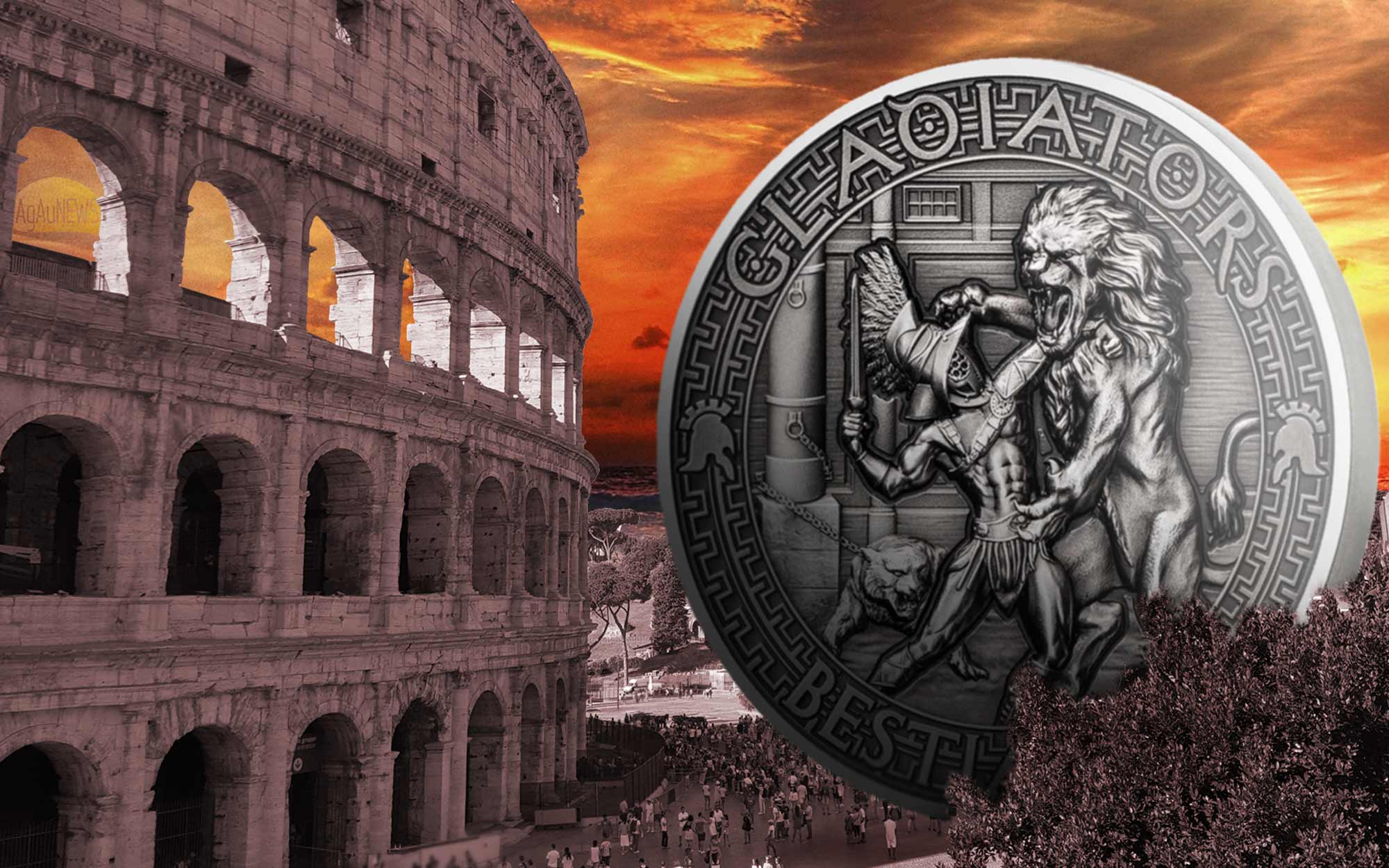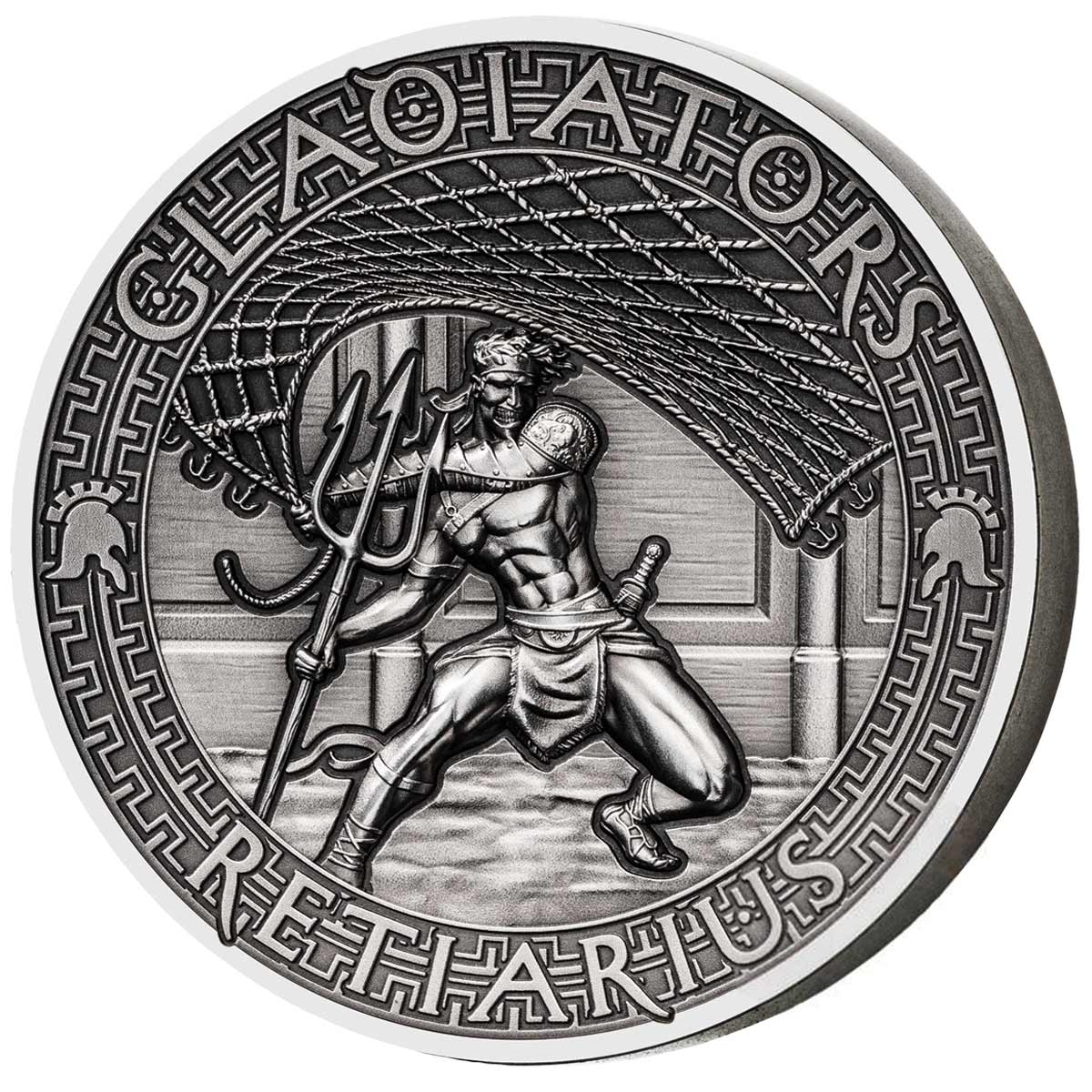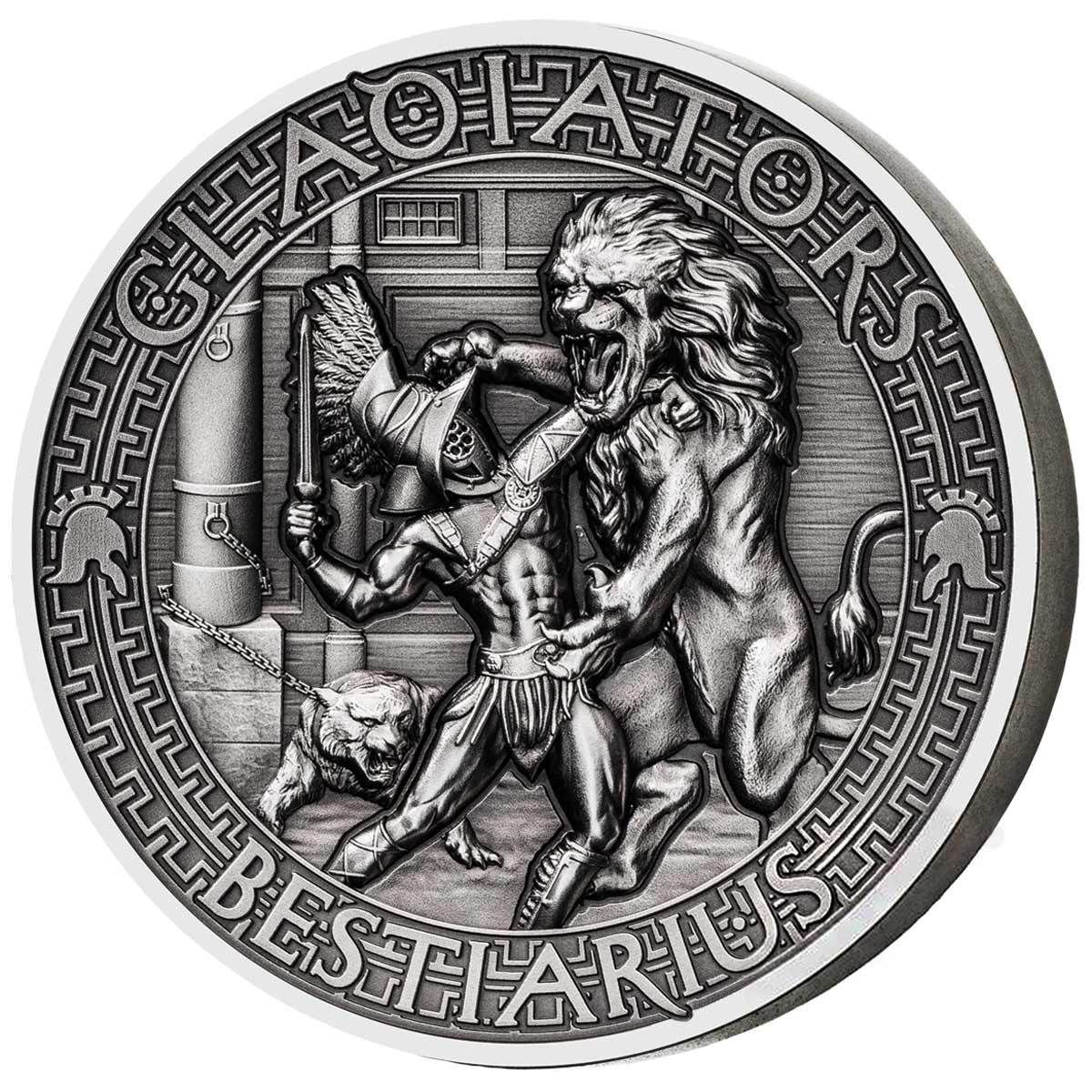Beast and trident fighters feature on the third pair of Gladiator coins in MDM’s fine silver series
MDM’s series of eight coins featuring some of the most popular types of fighting styles in the Ancient Roman gladiatorial world continues with the release of the third pair. Ostensibly the sequel to the nine-coin Norse Gods series released in 2016, this series features a very similar style of artwork and an identical format.
We’re huge fans of this series despite the relatively small diameter (38.6 mm) for a two-ounce coin. The artwork leans much more towards the realistic than the stylistic that predominates in the similar ancient mythology genre, appropriate given the subject matter here is strictly based on factual history instead of myth.
Each coin is issued for Solomon Islands and comes packaged in a good quality box. A bigger box that holds all eight coins is also available. If you’re wondering why we’ve not talked a lot about these coins in this article, it’s because we have one of our Coin Series Profiles dedicated to the series already available and these two coins have been added to it. Well worth a look, it shows all six of the coins released to date. Available soon, several site sponsors will have them or can get them for you, like Coins Boutique, Powercoin, and Pela Coins.
TWO NEW GLADIATORS
RETIARIUS: Net fighters, the Retiarius carried a trident and a net and fought without the protection of a helmet. The retiarius wore a loincloth held in place by a wide belt and a larger arm guard (manica) extending to the shoulder and left side of the chest. Occasionally a metal shoulder shield (galerus) was added to protect the neck and lower face. The retiarius was routinely pitted against a heavily armed secutor.
The net-fighter made up for his lack of protective gear by using his speed and agility and waiting for the opportunity to strike. He first tried to throw his net over his rival and then attack with his trident. Another tactic was to ensnare his enemy’s weapon in the net and pull it out of his grasp. Usually, the retiarius had to rely on his trident and dagger to finish the fight. The trident was a strong weapon, capable of inflicting piercing wounds on an unprotected body. The dagger was the final backup should the trident be lost, reserved for when close combat had to settle the bout.
Retiarii first appeared in the arena during the 1st century AD and had become standard attractions by the 2nd or 3rd century. The gladiator’s lack of armour and his reliance on evasive tactics meant that many considered the retiarius the lowliest (and most effeminate) of an already stigmatised (i.e. gladiators) class.
BESTIARIUS: Among Ancient Romans, bestiarii were those who went into combat with beasts, or were exposed to them. It is conventional to distinguish two categories of bestiarii: the first were those condemned to death via the beasts and the second were those who faced them voluntarily, for pay or glory. The latter are sometimes erroneously called gladiators; to their contemporaries, however, the term gladiator referred specifically to one who fought other men. The contemporary term for those who made a career out of participating in arena “hunts” was venatores.
Bestiarii, as reported by Seneca, consisted of young men who, to become expert in managing their arms, fought sometimes against beasts, and sometimes against one another; and of bravos who, to show their courage and dexterity, exposed themselves to this dangerous combat. Augustus encouraged this practice in young men of the first rank; Nero exposed himself to it; and it was for killing beasts in the amphitheatre that Commodus acquired the title of the Roman Hercules.
SPECIFICATION
| NAME | 2017 GLADIATORS |
| DENOMINATION | $5 Solomon Islands |
| COMPOSITION | 0.999 silver |
| WEIGHT | 62.2 g |
| DIAMETER | 38.61 mm |
| FINISH | Antique |
| MODIFICATIONS | High-relief |
| MINTAGE | 1,000 |
| BOX / COA | Yes / Yes (Series box with padded interior available) |





Leave A Comment